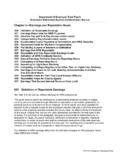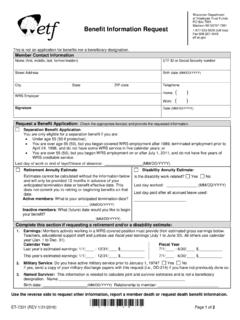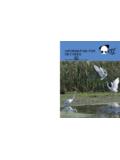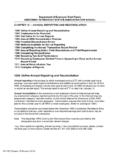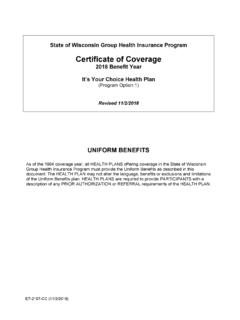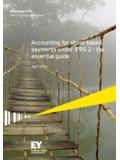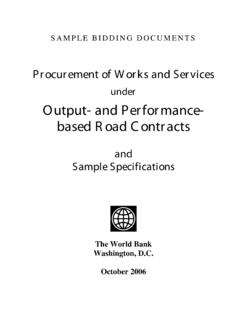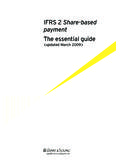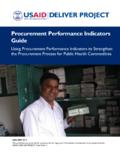Transcription of Chapter 3—WRS Eligibility Determination
1 Department of Employee Trust Funds Wisconsin Retirement System Administration Manual Chapter 3 WRS Eligibility Determination 300 Eligibility for Participation in WRS. 301 History of Eligibility for Participation in WRS. 302 Current Eligibility Based on Initial Employment 303 Employees Not Eligible for WRS Participation 304 Considerations in Determining WRS Eligibility 305 Employees Not WRS Eligible on Date of Hire and Expectations Change 306 Evaluation on the One-Year Anniversary of Employment 307 Evaluation on a 12-Month Rolling Look-Back 308 WRS Eligibility for Employees of a Joint Instrumentality 309 WRS Eligibility for Emergency Workers 310 Duration of Employment Exceeds 30 Calendar Days 311 Continuation of Participation 312 Employees Returning to Work at the Same Employer 313 Examples of Employment Situations and Eligibility for Participation 314 Employee or Contracted Personnel?
2 315 WRS Eligibility Appeals 316 Statute of Limitations for Corrections to Service, Earnings and Contributions that Impact WRS Disability and Retirement Benefit Payments 317 Maintaining Records Longer than Seven Years 300 Eligibility for Participation in WRS. Employers are responsible for evaluating and determining each employee's Eligibility for WRS. participation. Anyone who receives earnings for personal services rendered must be evaluated for WRS Eligibility , including those initially employed as seasonal, project, temporary and/or part-time employees, members of boards and commissions, and elected officials. It is the intent of the statutes that all employees participate in WRS, unless your employee is excluded as defined in Wis. Stat. Employees can appeal their employer's Determination regarding WRS Eligibility . Upon such an appeal the employer will be required to justify their Determination .
3 Refer to subchapter 315 for appeal information. Employees who meet the Eligibility criteria must be enrolled in the WRS. (The employee has no choice unless the employee is a WRS annuitant upon hire. Refer to Chapter 15.). Employees who do not meet the Eligibility criteria may not be enrolled in the WRS. ET-1127 ( Chapter 3 REV 12/7/2016). Wisconsin Retirement System Chapter 3 WRS Eligibility Determination 301 History of Eligibility for Participation in WRS. This is a historical summary of the WRS Eligibility criteria. Participation is based on the Eligibility laws and statutes in force at the time of hire. There may be criteria that employees need to meet prior to participating in the WRS. Each situation is unique and requires research beyond what is stated here. Specific questions may be directed to the Employer Communication Center toll free at 1-877-533-5020 or 608-266-3285.
4 The following are the criteria for WRS Eligibility as listed in Wis. Stat. (previously Ch. 41 for non-teachers and Ch. 42 for teachers on or after 1982). Please note that the criteria vary based on time periods of employment and whether the employee was a teacher or non-teacher. Teacher Eligibility Requirements If the period of employment began prior to January 1, 1982, the participation requirements were: Employee was expected to teach for at least half a month of what was considered full-time employment. Teaching may have been done at one or more employers. Eligibility was evaluated on a month-by-month basis, so that a part-time teacher might be eligible in some months but not in others. (Wisconsin Administrative Code TR ). If the period of employment began on or after January 1, 1982, the participation requirements were: Employed with the expectation that there would be at least 440 hours and the expected duration of employment was at least 24 months.
5 If the period of employment began on or after July 1, 1989, whether a continuing employee or a new hire, the participation requirements were: Employee was expected to work at least one-third of what is considered full-time employment and be employed for at least one year. Wisconsin Administrative Code defines one-third full time as 440 hours and one year as 365 consecutive days (366 in leap year) from the date of hire. Effective July 1, 2009, these criteria also apply to school district educational support personnel1. School district educational personnel include all non-teaching employees of school districts (custodial staff, administrative assistants, etc.). If the teacher or school district educational support personnel employee (after July 1, 2009) was not WRS eligible upon hire, the statute provided additional opportunities to become eligible for participation.
6 The subsequent opportunities for Eligibility were: 1. Within the first year of employment; if expectations change and the employee is expected to work 440 hours and for at least a year. Refer to subchapter 305 for explanation. 2. On the employees' one-year anniversary date of employment; if the employee has worked 440 hours in the first year of employment. Refer to subchapter 306 for explanation. 1. 2009 Wisconsin Act 28 amending Wis. Stat (2m) (a) effective July 1, 2009. ET-1127 ( Chapter 3 REV 12/7/2016). Wisconsin Retirement System Chapter 3 WRS Eligibility Determination 3. During a 12-month rolling look-back; if the employee worked 440 hours in the immediately preceding 12-month period. Refer to subchapter 307 for explanation. Non-Teacher Eligibility Requirements If the period of employment began before January 1, 1982, the participation requirements were: the position was expected to require 600 hours or more each year (Wis.)
7 Stat. ). If the period of employment began on or after January 1, 1982, the participation requirements were: employed with the expectation that there would be at least 600 hours of actual performance of duty per calendar year and the expected duration of employment was at least 24 months;. or had completed at least 600 hours of actual performance of duty for an employer in each of three consecutive calendar years. Coverage began with the 601st hour in the third year. If the period of employment began on or after January 1, 1990, whether a continuing employee or a new hire, the participation requirements were: employee was expected to work at least one-third of what is considered full-time employment and be employed for at least one year. Wisconsin Administrative Code defines one-third as 600 hours and one year is 365 consecutive days (366 in leap year) from the date of hire.
8 Note: The 600-hours-per-year requirement for WRS participation applies to all other non-teaching and non-school district educational support personnel, including educational support personnel at technical colleges or other educational institutions other than school districts ( , CESAs). If an employee was not WRS eligible upon hire, the statute provided additional opportunities to become eligible for participation. The subsequent opportunities for Eligibility were: 1. Within the first year; if expectations change and the employee is expected to work 600 hours and for at least a year. Refer to subchapter 305 for explanation. 2. On their one-year anniversary date of employment; if the employee has worked 600 hours in the first year of employment. Refer to subchapter 306 for explanation. 3. During a 12-month rolling look-back; if the employee worked 600 hours in the immediately preceding 12-month period.
9 Refer to subchapter 307 for explanation. 302 Current Eligibility Effective July 1, 2011 (Act 32). Wisconsin Act 32 did not modify the WRS Eligibility criteria for any employee covered by a WRS. participating employer prior to July 1, 2011. ET-1127 ( Chapter 3 REV 12/7/2016). Wisconsin Retirement System Chapter 3 WRS Eligibility Determination Employers must now determine whether a new employee does or does not have creditable service under the WRS prior to July 2, 2011, in order to determine which WRS Eligibility hourly criterion to use. In most cases, this information can be verified by accessing the Prior Service and Benefit Inquiry application of the Online Network for Employers. If this site is inconclusive, contact the Employer Communication Center at 1-877-533-5020. Note: Employees who have taken a WRS lump sum benefit lose their earlier rights under the WRS.
10 And are subject to the two-thirds of full-time employment criterion. Note: Several opportunities exist in statute for an employee to be eligible for participation in the WRS. The various opportunities for the Eligibility criteria to be met are: 1. When first hired. 2. When expectations change. 3. On their one-year anniversary date of employment. 4. During a 12-month rolling look-back WRS participating employee prior to July 1, 2011. To qualify for participation in the WRS, employees covered under the WRS prior to July 1, 2011, must meet both of the following Eligibility criteria: 1. Employee is expected to work at least one-third of what is considered full-time employment, as defined: 600 hours for non-teachers and non-school district educational support personnel, or 440 hours for teachers and school district educational support personnel (not including educational support personnel for technical colleges and other educational institutions).



